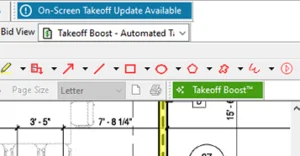No doubt, the spread of the coronavirus (COVID-19) is changing how many construction pros get work done. For an industry built on handshakes and one-on-one conversations, the concept of social distancing may be hard to comprehend.
For many, the new normal may involve carving out a workspace on the kitchen table. Your daily worries may revolve around productivity and connectivity challenges and unexpected distractions—like barking dogs and ringing doorbells.
Cloud-Based Tools to the Rescue
As your morning routine becomes less about grabbing a coffee from your favorite java spot on the way to the site, you may still be tasked with delivering on business as usual. There are still quantities to count, bids to complete, pre-bid conferences to attend, and start dates to evaluate for projects already in the pipeline.
Ready for some good news? Cloud-based technology and tools can help all in construction when it comes to making remote work a lot more seamless. You are already using many cloud tools to collaborate and communicate between the field and the office. Just look down to that smartphone or tablet you’re holding and you’re probably already using cloud-based web apps—from email to file-sharing platforms to chat and team meeting apps. These include everything from Gmail to iCloud and from Slack to Teams. If you’ve ever connected to your work email at Starbucks, you’ve already experienced the power of using your data in the cloud.
You’ve probably also experienced Windows updates that occur seamlessly in the background where all you need to do is log-in to your account. Even better, you have the benefit of disaster recovery taking place in the cloud as robust platforms like Gmail offer great security that is encrypted during transfer and storage.
Why You Should Embrace the Cloud
With cloud-based technology and tools, the benefits are many—from mobility to accuracy of digital project data. These tools will ultimately help you level the playing field in the short-term and when facing any potential economic downturn due to COVID-19. With cloud tools, you can gain seamless integration for applications across your construction project workflows—plus you get robust security and data storage.
Using cloud technology, GCs and subcontractors can maintain closer relationships with crew members and head off any miscommunication. This will save your business time and money—a win-win in boom or bust times. Especially when you consider that McKinsey & Co. found that most large construction projects are typically completed 80% over budget and take 20% longer than originally scheduled, according to their 2016 report.
Going Faster with Cloud Tools
Construction tech companies who are developing these tools for the construction industry have one goal in mind: delivering a faster, more efficient experience. Some construction pros are already using more advanced cloud-based technologies to manage all their preconstruction workflows from a single platform. No matter the economic climate, these tools will make it easier to build stronger relationships and increase collaboration between all parties.
For example, cost estimators often discover it’s much easier for the whole team to stay on the same page and work collaboratively in real-time when using cloud-based takeoff tools. If everyone has visibility into revisions during your takeoff, it’s faster to see what has changed from one drawing to the next. With cloud-based systems, your bid team can make sure everyone is working on the most up-to-date plans and can quickly see what has changed from one drawing to the next.
In the post-COVID-19 world, we are starting to come to grips with how to make remote work a reality. Whether your job is to find project leads, perform takeoffs and create estimates, or submit bids, the cloud can help—whether working from your home office or not.
Want to stay on top of how COVID-19 is impacting the construction industry? Check out the ConstructConnect COVID-19 page now.



